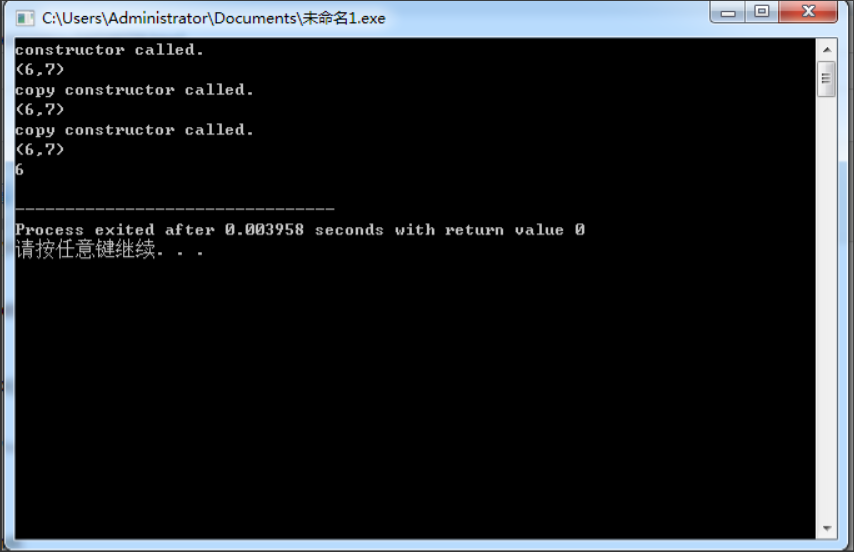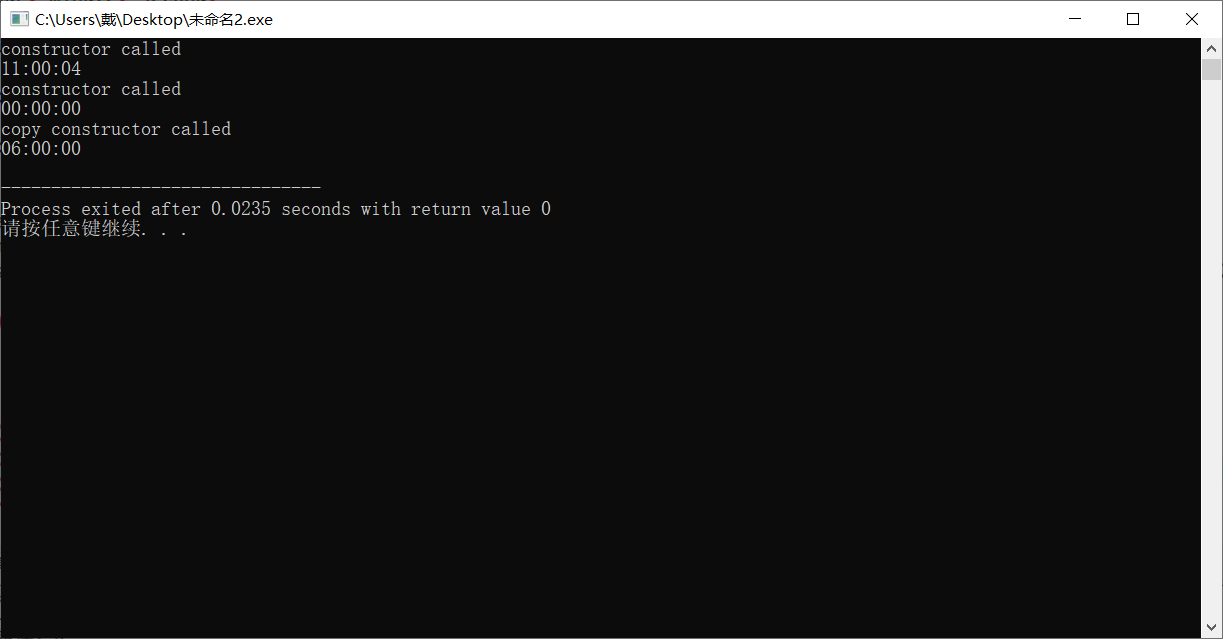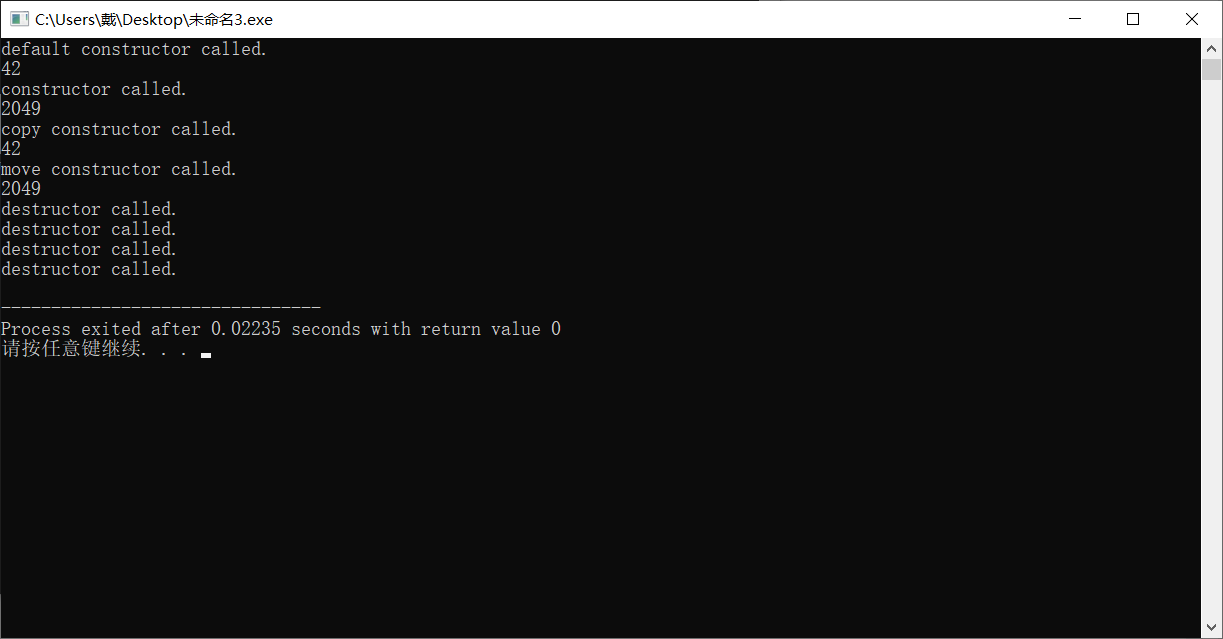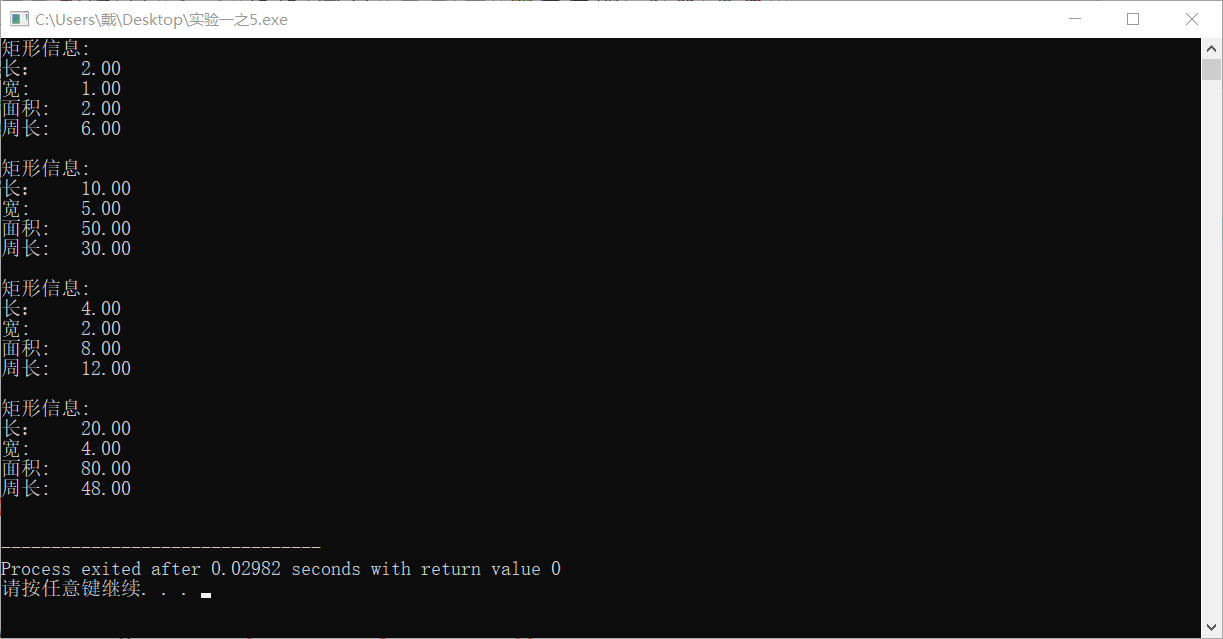实验一
#include<iostream> using std::cout; using std::endl; class point { public: point(int x0=0, int y0=0); point(const point &p); ~point()=default; int get_x() const{return x;} int get_y()const{return y;} void show()const; private: int x,y; }; point::point(int x0,int y0):x{x0},y{y0} { cout<<"constructor called."<<endl; } point::point(const point& p): x{p.x},y{p.y} { cout<<"copy constructor called."<<endl; } void point::show() const {cout<<"("<<x<<","<<y<<")"<<endl; } int main () { point p1(6,7); p1.show(); point p2=p1; p2.show(); point p3{p2}; p3.show(); cout << p3.get_x()<<endl; return 0; }

三::::
#include <iostream> #include <iomanip> using std::cout; using std::endl; class Clock { public: Clock(int h = 0, int m = 0, int s = 0); Clock(const Clock& t); ~Clock() = default; void set_time(int h, int m = 0, int s = 0); void show_time() const; private: int hour, minute, second; }; Clock::Clock(int h, int m, int s): hour{h}, minute{m}, second{s} { cout << "constructor called" << endl; } Clock::Clock(const Clock& t): hour{t.hour}, minute{t.minute}, second{t.second} { cout << "copy constructor called" << endl; } void Clock::set_time(int h, int m, int s) { hour = h; minute = m; second = s; } void Clock::show_time() const { using std::setw; using std::setfill; cout << setfill('0') << setw(2) << hour << ":" << setw(2) << minute << ":" << setw(2) << second << endl; } Clock reset() { return Clock(0, 0, 0); } int main() { Clock c1(11,0,4); c1.show_time(); c1 = reset(); c1.show_time(); Clock c2(c1); c2.set_time(6); c2.show_time(); }

四::::
#include <iostream> class X{ public: X(); ~X() ; X(int m); X(const X& obj); X(X&& obj) noexcept; void show() const; private: int data; }; X::X(): data{42} { std::cout << "default constructor called.\n"; } X::~X() { std::cout << "destructor called.\n"; } X::X(int m): data{m} { std::cout << "constructor called.\n"; } X::X(const X& obj): data{obj.data} { std::cout << "copy constructor called.\n"; } X::X(X&& obj) noexcept: data{obj.data} { std::cout << "move constructor called.\n"; } void X::show() const {std::cout << data << std::endl; }int main() { X x1; x1.show(); X x2{2049}; x2.show(); X x3{x1}; x3.show(); X x4{ std::move(x2) }; x4.show(); }
对象被创建后即调用构造函数,对象被销毁前时即调用析构函数

五::::
#include <iostream> #include <iomanip> class rectangle{ public: rectangle(double l=2.00,double w=1.00):length{l },width{w} {}; rectangle(const rectangle& obj):length{obj.length},width{obj.width}{}; ~rectangle()=default; double len() const{return length;} double wide()const{return width;} double area()const{return length*width;} double circumference() const{return (length+width)*2;} void resize (int times); void resize (int l_times,int w_times); private: double length,width; }; void rectangle::resize(int times){ length*=times; width*=times; } void rectangle::resize(int l_times,int w_times){ length*=l_times; width*=w_times; } void output(const rectangle &rect) { using namespace std; cout << "矩形信息: \n"; cout << fixed << setprecision(2); cout<<std::left<<setw(8)<<"长:"<<rect.len()<<endl; cout<<std::left<<setw(8)<<"宽:" <<rect.wide()<<endl; cout<<std::left<<setw(8)<<"面积:" <<rect.area()<<endl; cout<<std::left<<setw(8)<< "周长:"<<rect.circumference()<<endl; cout<<endl; } int main() { rectangle rect1; output(rect1); rectangle rect2(10, 5); output(rect2); rectangle rect3(rect1); rect3.resize(2); output(rect3); rect3.resize(5, 2); output(rect3); }



 浙公网安备 33010602011771号
浙公网安备 33010602011771号